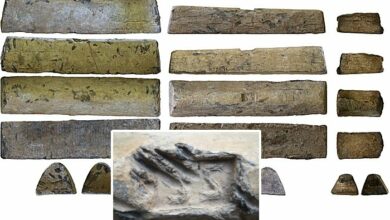North America’s First Languages Originate From Siberia

Jan Bartek – AncientPages.com – A new study that integrates linguistic evidence with data from archeology and paleoclimatology reveals that the first languages in North America can be traced to two language groups that originated in Siberia.
Credit: Adobe Stock – Bartek
In recent decades, our understanding of the original inhabitants of North America, and subsequently Central and South America, has significantly expanded. However, one aspect continues to elude us: the evolution of the languages spoken by individuals residing in present-day Canada, the U.S., and Mexico.
Johanna Nichols, a linguist from the University of California, Berkeley, has applied statistical methods she developed to trace the lineage of languages back to the earliest inhabitants of North America, dating as far back as 24,000 years.
Nichols’ methodology is grounded in linguistic typology – a discipline that compares and categorizes languages based on common features. She created comprehensive lists of language traits to gain insights into early North American languages and implemented them across all known languages. Each language was then evaluated based on these identified characteristics. This approach facilitated her in drawing comparisons between different languages to identify similarities and discern patterns among them.
Nichols discovered that the languages spoken in early North America can be traced back to two distinct lineages, both of which have their roots in Siberia. She points out that these languages were brought by individuals who migrated across land bridges during the Ice Age glaciation events.
“The first and second openings (~24,000 and ~15,000 years ago, following Praetorius et al., 2023) resulted in coastal entries south of the ice sheets (i.e. south of the Columbia River). The resultant linguistic populations have mingled in Oregon and California; their descendants cannot so far be clearly distinguished on linguistic evidence, and will be jointly called the early stratum.
The third opening was the formation of the ice-free corridor ~14,000 years ago, resulting in colonization of the North American interior by people from Beringia and unglaciated northwestern Alaska; this produced a later stratum which gave rise inter alia to the Clovis phenomenon and whose linguistic descendants are structurally quite distinct from the early stratum found in California and Oregon.
The fourth opening was the retreat of the coastal ice sheet, making possible coastal and near-coastal settlement of the Pacific Northwest ~12,000 years ago. Descendants of fourth-opening languages share many of the distinctive properties of third-opening languages but can be distinguished on other salient properties. Still later came the entries of two known language families: Athabaskan-Eyak-Tlingit (AET, a.k.a. Na-Dene), mostly interior-oriented, and Eskimo-Aleut, primarily coastal,” Nichols writes in her study.
She discovered that two primary groups she studied diverged into distinct languages as populations relocated to various regions, with her research primarily concentrating on 60 such languages. Her findings indicated that several influxes of Siberians migrating to North America influenced numerous of these languages. She deduced that certain traits of the original languages have been preserved over time and are now present in today’s linguistic population.
She identified approximately 200 distinct language families in the Americas in her research. This level of variation necessitates a driving force, she wrote in her study, and in her opinion, the primary explanation can be found in human migration patterns.
The study was published in the American Journal of Biological Anthropology
Written by Jan Bartek – AncientPages.com Staff Writer





